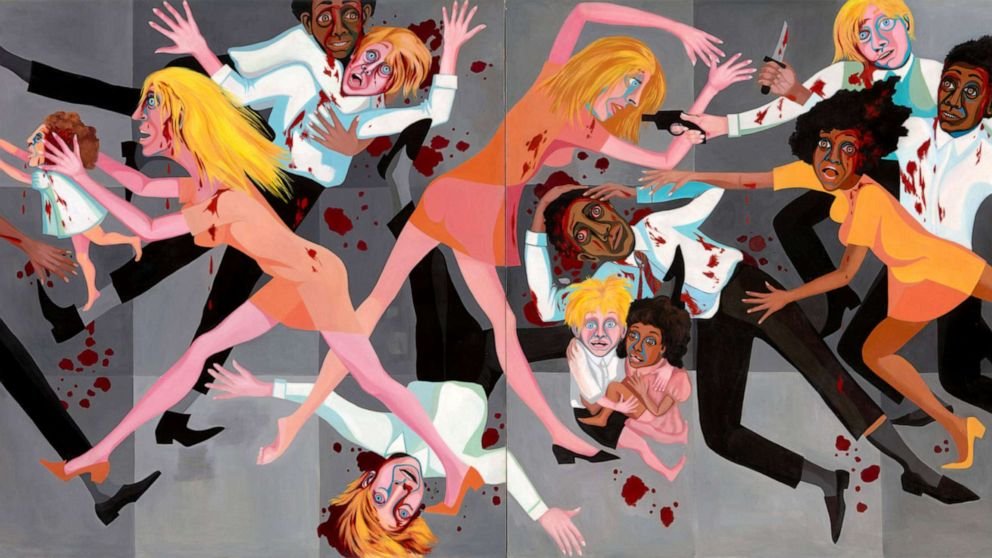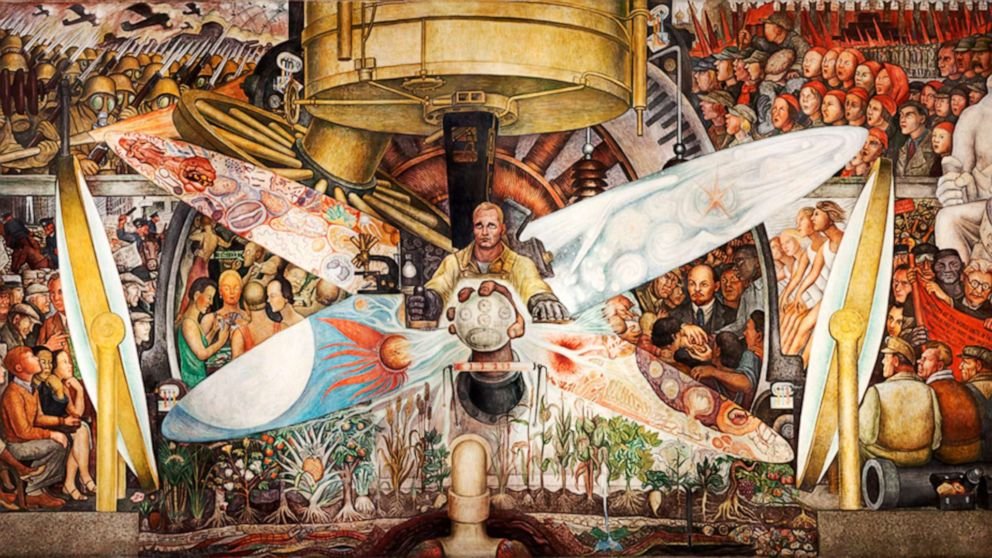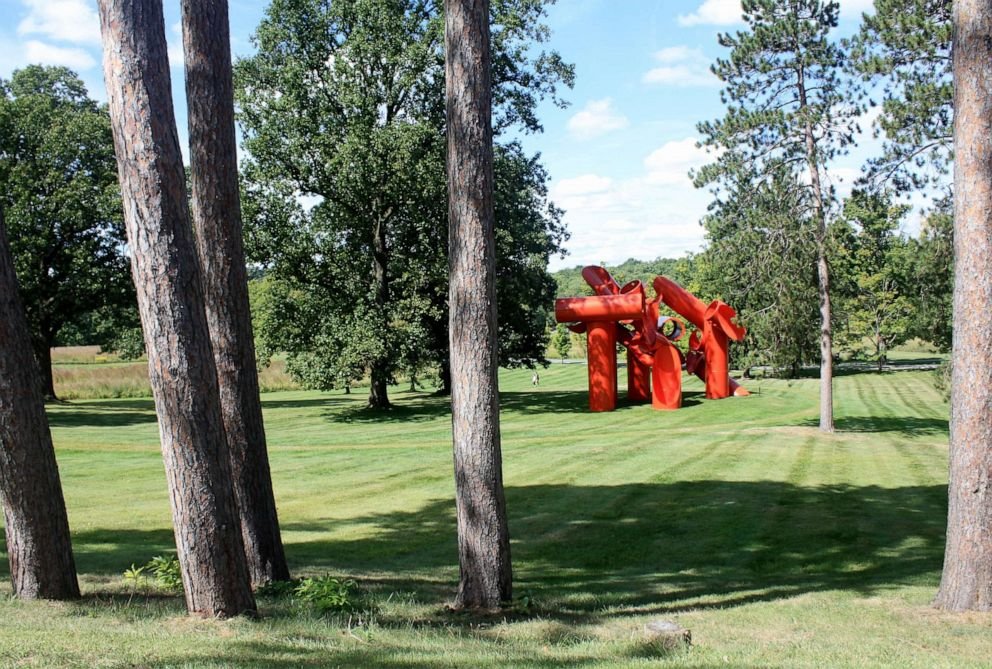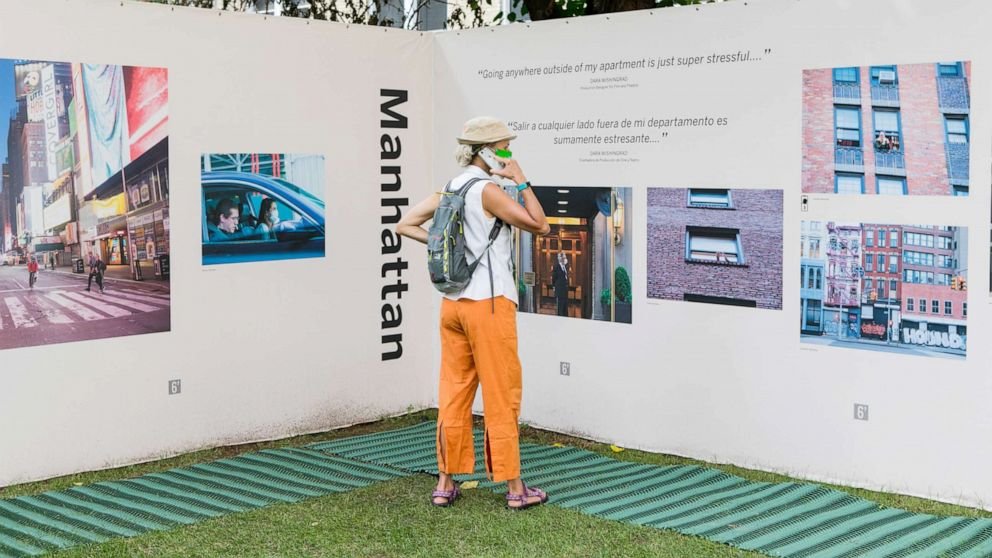Top curators weigh in on role of art during coronavirus, racial reckoning
Written by Rosa Sanchez, and published originally by abc NEWS September 19, 2020.
As museums, galleries and outdoor exhibitions start to reopen in New York amid the coronavirus pandemic, at the front of many artists' and curators' minds is the role of visual art in a crisis and whether it is an escape from, a reflection of or a reaction to the state of the world.
"Art is how we express, how we feel our anxieties," said Sally Tallant, the president and executive director of the Queens Museum. "It's how we can touch on things that are difficult to touch in other ways. You can go to any museum and see thousands of artists trying to process grief. And [after the pandemic] we're going to feel a collective grief. Art does so much good to people's mental health."
Upon entering the Museum of Modern Art, one can see a tribute to the resilient city in the form of Milton Glaser's iconic "I Love NY" logo. Walking through the mostly empty galleries, one can see parallels between the art and the chaotic year we are living. The racial injustice protests around the country are reflected in "In and Around Harlem," a collection of paintings and words marking the struggles Blacks and immigrants face daily in the United States. Today's violent acts of racism are also mirrored in Faith Ringgold's "American People Series #20: Die" (1967), which features Black and white men and women, dressed in office clothes, brutally fighting for no apparent reason, while two scared children hold each other, crying.

Taking a different approach is "Out of War," in which the artists turned to fantastical, surreal beauty, to distract from the suffering caused by World War II.
"What do we want from art? On one hand, we want that sense of seeing the world in a different way, being able to transport our vision into a different kind of imagination, into joy and beauty and happiness," Barbara Haskell, a curator at the Whitney Museum of American Art, told ABC News. "On the other hand, there is the idea that art can focus our attention on things that need change: a visual representation of inequalities."

Haskell put together the Whitney's show "Vida Americana," as well as its presentation of artist Agnes Pelton. These shows represent opposite sides of the spectrum in terms of the artists' reactions to crises. "Vida Americana," which is a collection of paintings by Mexican painters and muralists, shows lynching during The Great Depression, social and political unrest during the stock market crash of 1929 and police brutality.
"It's so relevant," Haskell said, pointing to today's socio-political climate. "But Pelton is on the opposite side. She saw the world as a place that couldn't be reformed and, for her, happiness had to do with connecting to a spiritual divine that was immaterial."

Pelton's paintings are dreamy, unfocused, metaphysical designs in soft pastels and calming geometric shapes. The same cannot be said for Diego Rivera's sharp works of political activism or David Alfaro Siqueiros' raw scenes of torture and grief made to provoke public outrage.
Beautiful, abstract art like Pelton's can also be found, in the form of sculptures, at Storm King Art Center and the Clark Art Institute. These museums' outdoor exhibitions take the idea of "escapism" to another level, by allowing nature and vast landscape to interact with the pieces, therefore adding a layer of sensory experience to the art-viewing process. Storm King visitors can scan a QR code on their phones and listen to an audio track while looking at the pieces -- or they can detach themselves entirely and enjoy a picnic under a giant, red steel sculpture flanked by aging maple trees.

"Art is important right now because we are all flocking to it, we need it," Storm King curator Nora Lawrence said. "But I don't think it's necessarily an escape. I think it's a reminder to be mindful, and a reason to think deeply and think ahead of our time of panic."
"People feel a real freedom seeing this exhibition," Lawrence added. "And one thing we've been working on is to make sure the art is more readily available, also in a digital format, for people who are not in our town."
Some of Storm King's artists' work involves poetry readings that are featured on Zoom and conversations with professionals that are streamed on Instagram Live. The museum is also offering free admission for health care workers and people with EBT cards.
"There's less of a division in what people consider art and seeing art," Lawrence said, speaking of how viewing and displaying art has changed during the pandemic. "Our outreach is now definitely there for people in ways it wasn't before."

The Queens Museum recently launched a project that is both accessible to the public and fully interacts with today's crises. It consists of black and white works by artist Mierle Laderman Uke, with the words "Dear service worker, 'Thank you for keeping NYC alive!' For ------> forever..." The art is displayed on a digital billboard in Times Square, on the facade of the Queens Museum and in the MTA subway, in the form of posters.

"How are we supposed to understand what's happening in this world? It's an experience we are all having. We need to ground it in something. And art is an important way to ground it," Tallant said, adding that the museum has waved its entrance fee so "everyone can see the art."
Another public, outdoor art project created as a reaction to the pandemic and current socio-political unrest is the New-York Historical Society's "Hope Wanted" show, which consists of photographs, text, audio and poems of New Yorkers, across the five boroughs, reacting to the crises.
"Like most New Yorkers, I was sitting here in April very depressed. We had no idea what this was or where this was coming from. I just remember a lot of sirens and a lot of sadness," said Kevin Powell, the project's co-creator and curator, explaining how the show came about. "There was no thought of an exhibit, it was like: 'Let's do this for New York City.'"

When asked by ABC News what he believes art's role should be in a time of crisis, Powell said, without hesitation: "I think it should join the conversation."
"Art is absolutely necessary during times of crisis," he added. "For this project, we went out there with the mindset of, 'How do we get people to see what we need them to see?' Art helps us make sense of the chaos in the world, no matter what is happening."
Speaking of the need for art to not only reflect the times, but also be accessible and inclusive to all, Powell said, "Art should always be for all people. Before we went out into the streets of New York to shoot photos, I said, 'There have to be multicultural, multigenerational, multigender people in this exhibit,' because as an artist of color I'm very conscious of art not being accessible or excluding certain people. That's also why the text in the show is also translated into Spanish. Art is for everyone."
The exhibitions mentioned are now open with limited capacity, reserved timed tickets, mandatory mask use, temperature checks and social distancing.